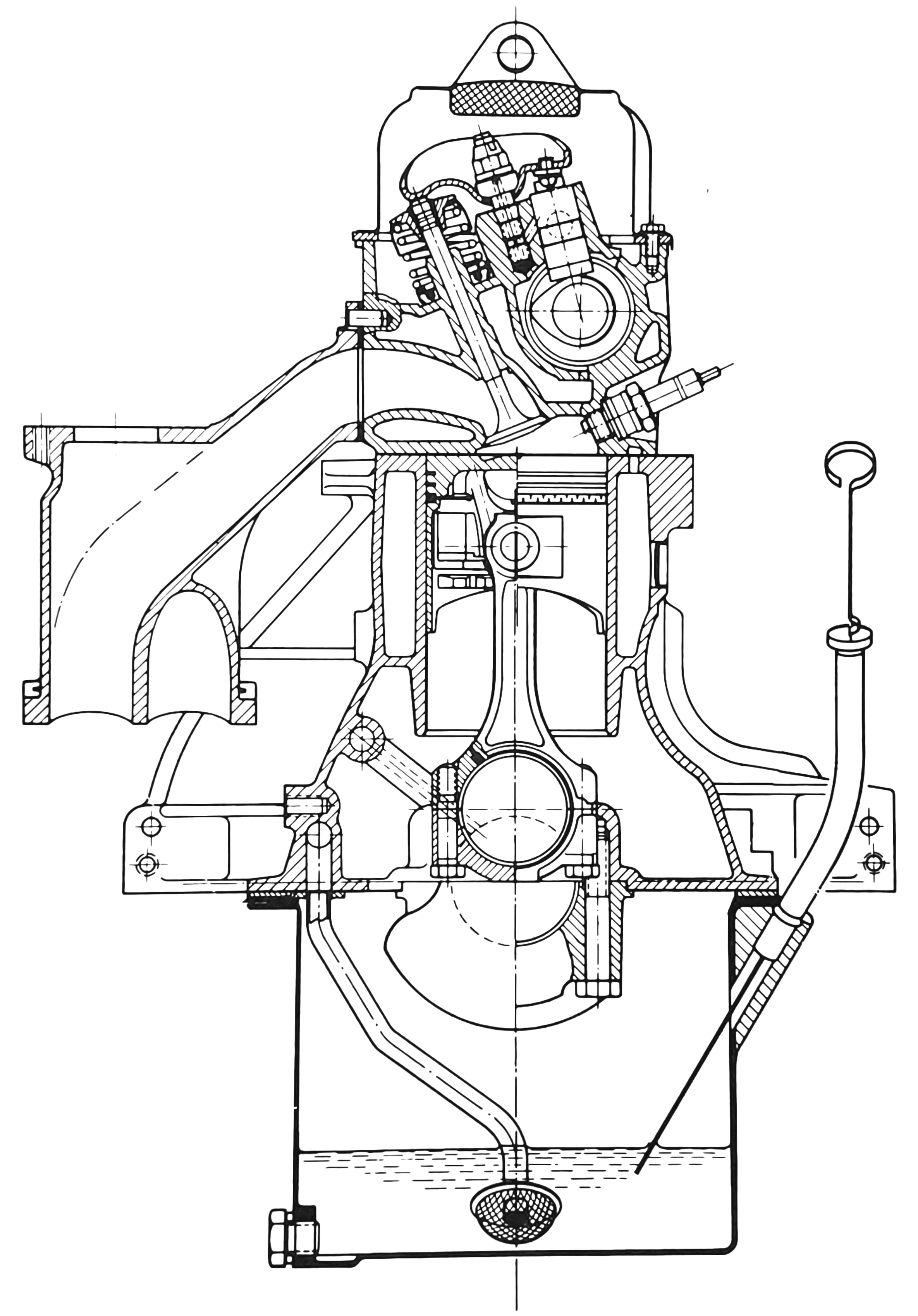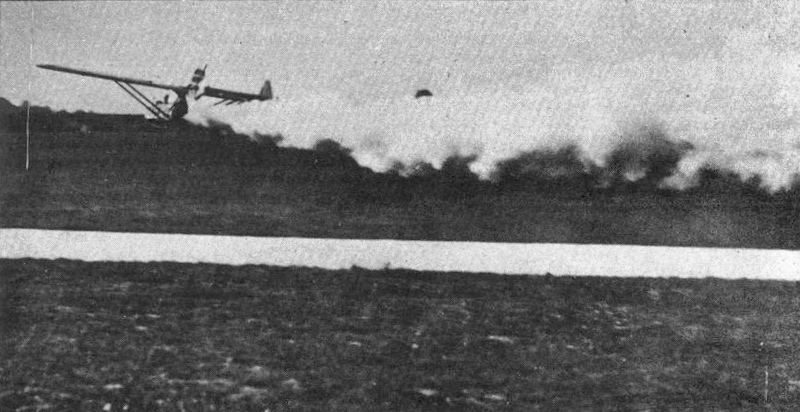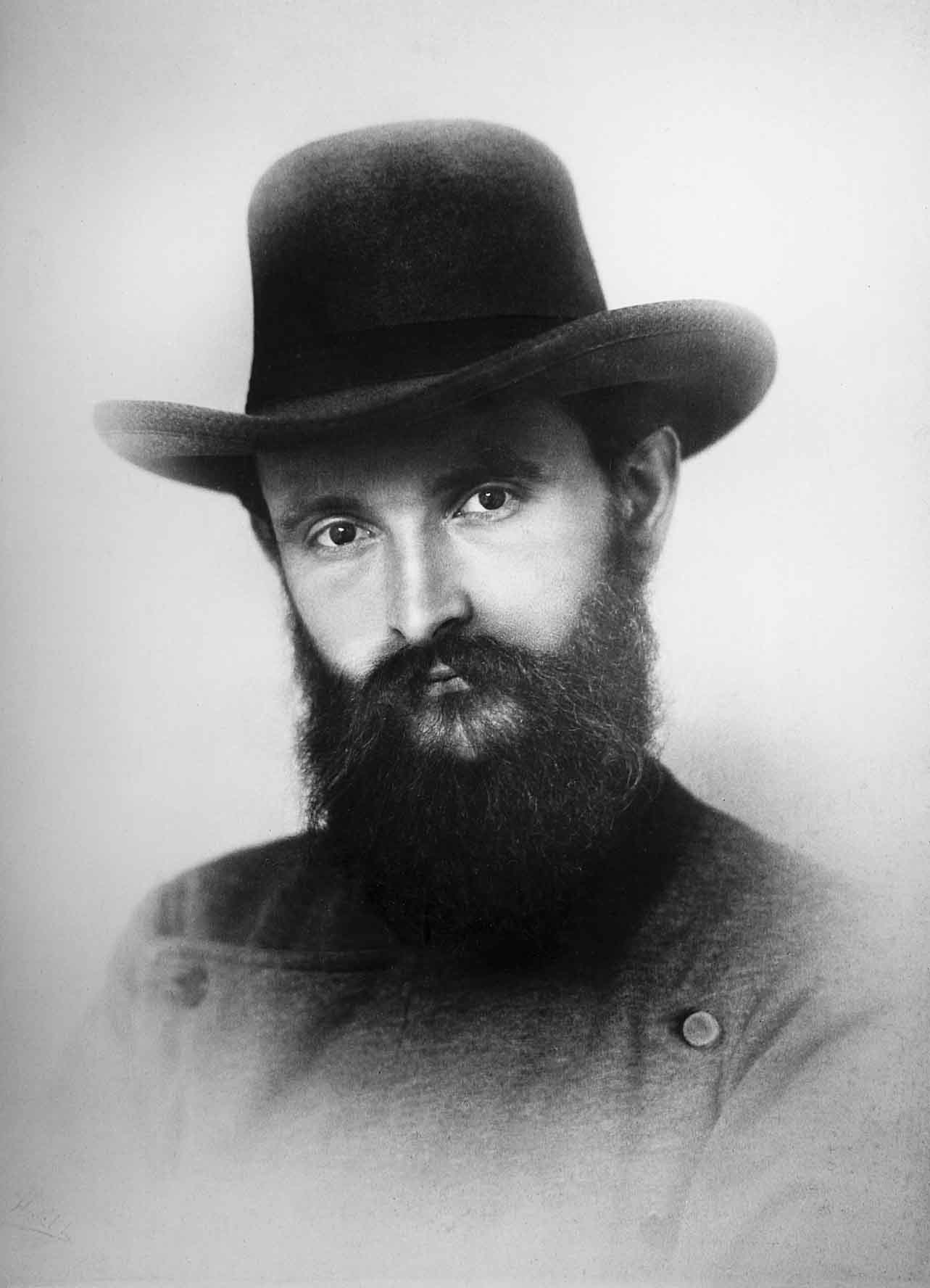|
Opel CIH Engine
The Opel cam-in-head engine (CIH) is a family of automobile engines built by former General Motors subsidiary Opel from 1965 until 1998, appearing extensively in Opel/Vauxhall badged cars during this period. Both four- and six-cylinder inline configurations were produced. The name derives from the location of the camshaft, which was neither cam-in-block nor a true overhead camshaft. In the CIH engine the camshaft is located in the cylinder head but sits alongside the valves rather than above them, so therefore effectively is still an overhead valve design. The valves are actuated through very short tappets and rocker arms. The engine first appeared in the Opel Rekord B in 1965, and was largely replaced in four-cylinder form by the GM Family II unit as Opel/Vauxhall's core mid-size engine in the 1980s, with the six-cylinder versions continuing until 1994 in the Omega A and Senator B. A large capacity 2.4L four-cylinder version continued until 1998. A diesel version of the CIH w ... [...More Info...] [...Related Items...] OR: [Wikipedia] [Google] [Baidu] |
Opel Rekord Series E
The Opel Rekord Series E is a large family car that replaced the Opel Rekord Series D, Rekord D on Opel's Rüsselsheim production lines in August 1977, following the end of the summer vacation plant shut-down. It shared its wheelbase and inherited most of its engines from its predecessor, but the bodies were completely new. The corresponding Opel Commodore, Opel Commodore C was essentially identical to the Rekord E, but fitted with 6-cylinder engines. In October 1982, the Rekord E was extensively reworked, retaining the central portion of the body, the same windows and the principal elements of the substructure, but with redesigned front and back ends and with several significant new engines. The pre- and post-facelift versions are commonly referred to as the E1 and E2, respectively. The Rekord E's nine-year production run was far longer than that of any previous generation of Opel Rekord. It became the third Opel Rekord to exceed a million units produced, but it took longer to r ... [...More Info...] [...Related Items...] OR: [Wikipedia] [Google] [Baidu] |
Petrol Engine
A petrol engine (gasoline engine in American and Canadian English) is an internal combustion engine designed to run on petrol (gasoline). Petrol engines can often be adapted to also run on fuels such as liquefied petroleum gas and ethanol blends (such as '' E10'' and '' E85''). They may be designed to run on petrol with a higher octane rating, as sold at petrol stations. Most petrol engines use spark ignition, unlike diesel engines which run on diesel fuel and typically use compression ignition. Another key difference to diesel engines is that petrol engines typically have a lower compression ratio. History The first practical petrol engine was built in 1876 in Germany by Nicolaus August Otto and Eugen Langen, although there had been earlier attempts by Étienne Lenoir in 1860, Siegfried Marcus in 1864 and George Brayton in 1873. Design Thermodynamic cycle Most petrol engines use either the four-stroke Otto cycle or the two-stroke cycle. Petrol engines have also ... [...More Info...] [...Related Items...] OR: [Wikipedia] [Google] [Baidu] |
Tappet
A tappet or valve lifter is a valve train component which converts rotational motion into linear motion in activating a valve. It is most commonly found in internal combustion engines, where it converts the rotational motion of the camshaft into linear motion of intake and exhaust valves, either directly or indirectly. An earlier use of the term was for part of the valve gear in beam engines beginning in 1715. The term is also used for components in pneumatic cylinders and weaving loom. History The first recorded use of the term tappet is as part of the valve gear in the 1715 Newcomen engine, an early form of steam engine. Early versions of the Newcomen engines from 1712 had manually operated valves, but by 1715 this repetitive task had been automated through the use of tappets. The beam of the engine had a vertical 'plug rod' hung from it, alongside the cylinder. Adjustable blocks or 'tappets' were attached to this rod and as the beam moved up and down, the tappets press ... [...More Info...] [...Related Items...] OR: [Wikipedia] [Google] [Baidu] |
Overhead Valve Engine
An overhead valve engine, abbreviated (OHV) and sometimes called a pushrod engine, is a piston engine whose valves are located in the cylinder head above the combustion chamber. This contrasts with flathead (or "sidevalve") engines, where the valves were located below the combustion chamber in the engine block. Although an overhead camshaft (OHC) engine also has overhead valves, the common usage of the term "overhead valve engine" is limited to engines where the camshaft is located in the engine block. In these traditional OHV engines, the motion of the camshaft is transferred using pushrods (hence the term "pushrod engine") and rocker arms to operate the valves at the top of the engine. However, some designs have the camshaft in the cylinder head but still sit below or alongside the valves (the Ford CVH and Opel CIH are good examples), so they can essentially be considered overhead valve designs. Some early intake-over-exhaust engines used a hybrid design combining eleme ... [...More Info...] [...Related Items...] OR: [Wikipedia] [Google] [Baidu] |
Overhead Camshaft
An overhead camshaft (OHC) engine is a piston engine in which the camshaft is located in the cylinder head above the combustion chamber. This contrasts with earlier overhead valve engines (OHV), where the camshaft is located below the combustion chamber in the engine block. ''Single overhead camshaft'' (SOHC) engines have one camshaft per cylinder bank, bank of cylinders. ''Dual overhead camshaft'' (DOHC, also known as "twin-cam") engines have two camshafts per bank. The first production car to use a DOHC engine was built in 1910. Use of DOHC engines slowly increased from the 1940s, leading to many automobiles by the early 2000s using DOHC engines. Design In an OHC engine, the camshaft is located at the top of the engine, above the combustion chamber. This contrasts the earlier overhead valve engine (OHV) and flathead engine configurations, where the camshaft is located down in the engine block. The valves in both OHC and OHV engines are located above the combustion chamber; ... [...More Info...] [...Related Items...] OR: [Wikipedia] [Google] [Baidu] |
Cam-in-block
A cam-in-block engine is where the camshaft is located in the engine block In an internal combustion engine, the engine block is the structure that contains the cylinders and other components. The engine block in an early automotive engine consisted of just the cylinder block, to which a separate crankcase was attach .... Types of cam-in-block engines are: * F-Head Engine * Flathead engine * Overhead valve engine (the only type where the valves are above the combustion chamber) * T-head engine {{set index ... [...More Info...] [...Related Items...] OR: [Wikipedia] [Google] [Baidu] |
Camshaft
A camshaft is a shaft that contains a row of pointed cams in order to convert rotational motion to reciprocating motion. Camshafts are used in piston engines (to operate the intake and exhaust valves), mechanically controlled ignition systems and early electric motor speed controllers. Camshafts in piston engines are usually made from steel or cast iron, and the shape of the cams greatly affects the engine's characteristics. History Trip hammers are one of the early uses of a form of cam to convert rotating motion, e.g. from a waterwheel, into the reciprocating motion of a hammer used in forging or to pound grain. Evidence for these exists back to the Han dynasty in China, and they were widespread by the medieval period. Camshafts were first described by Ismail al-Jazari in 1206. Once the rotative version of the steam engine was developed in the late 18th century, the operation of the valve gear was usually by an eccentric, which turned the rotation of the crankshaft i ... [...More Info...] [...Related Items...] OR: [Wikipedia] [Google] [Baidu] |
Opel
Opel Automobile GmbH (), usually shortened to Opel, is a German automobile manufacturer which has been a subsidiary of Stellantis since 16 January 2021. It was owned by the American automaker General Motors from 1929 until 2017 and the PSA Group prior to its merger with Fiat Chrysler Automobiles to form Stellantis in 2021. Most of the Opel lineup is marketed under the Vauxhall Motors, Vauxhall brand in the United Kingdom since the 1980s. Some Opel vehicles were badge engineering, badge-engineered in Australia under the Holden brand until 2020, in North America and China under the Buick, Saturn Corporation, Saturn (until 2010), and Cadillac brands, and in South America under the Chevrolet brand. Opel traces its roots to a sewing machine manufacturer founded by Adam Opel in 1862 in Rüsselsheim am Main. The company began manufacturing bicycles in 1886 and produced its first automobile in 1899. With the Opel RAK program, the world's first rocket program, under the leadership of F ... [...More Info...] [...Related Items...] OR: [Wikipedia] [Google] [Baidu] |
General Motors
General Motors Company (GM) is an American Multinational corporation, multinational Automotive industry, automotive manufacturing company headquartered in Detroit, Michigan, United States. The company is most known for owning and manufacturing four automobile brands: Chevrolet, Buick, GMC (marque), GMC, and Cadillac, each a separate division of GM. By total sales, it has continuously been the largest automaker in the United States, and was the List of manufacturers by motor vehicle production, largest in the world for 77 years before losing the top spot to Toyota in 2008. General Motors operates manufacturing plants in eight countries. In addition to its four core brands, GM also holds interests in Chinese brands Baojun and SAIC-GM-Wuling, Wuling via SAIC-GM-Wuling, SAIC-GM-Wuling Automobile. GM further owns GM Defense, a namesake defense vehicles division which produces military vehicles for the United States government and military, the vehicle safety, security, and information ... [...More Info...] [...Related Items...] OR: [Wikipedia] [Google] [Baidu] |
Motronic
Motronic is the trade name given to a range of digital engine control units developed by Robert Bosch GmbH (commonly known as Bosch) which combined control of fuel injection and ignition in a single unit. By controlling both major systems in a single unit, many aspects of the engine's characteristics (such as power, fuel economy, drivability, and emissions) can be improved. Motronic 1.x Motronic M1.x is powered by various i8051 derivatives made by Siemens, usually SAB80C515 or SAB80C535. Code/data is stored in DIL or PLCC EPROM and ranges from 32k to 128k. 1.0 Often known as "Motronic basic", Motronic ML1.x was one of the first digital engine-management systems developed by Bosch. These early Motronic systems integrated the spark timing element with then-existing Jetronic fuel injection technology. It was originally developed and first used in the BMW 7 Series, before being implemented on several Volvo and Porsche engines throughout the 1980s. The components of the Motronic ... [...More Info...] [...Related Items...] OR: [Wikipedia] [Google] [Baidu] |
Jetronic
Jetronic is a trade name of a manifold injection technology for automotive petrol engines, developed and marketed by Robert Bosch GmbH from the 1960s onwards. Bosch licensed the concept to many automobile manufacturers. There are numerous variations of the technology offering technological development and refinement, all but the Mono-Jetronic produced 1988-1995) being multi-point injection systems. D-Jetronic (1967–1979) Analogue multi-point fuel injection, 'D' is from meaning pressure. Inlet manifold vacuum is measured using a pressure sensor located in, or connected to the intake manifold, in order to calculate the duration of fuel injection pulses. Originally, this system was called Jetronic, but the name D-Jetronic was later created as a retronym to distinguish it from subsequent Jetronic iterations. D-Jetronic was essentially a further refinement of the Electrojector fuel delivery system developed by the Bendix Corporation in the late 1950s. Rather than choosing to er ... [...More Info...] [...Related Items...] OR: [Wikipedia] [Google] [Baidu] |
Robert Bosch GmbH
Robert Bosch GmbH (; ), commonly known as Bosch (styled BOSCH), is a German multinational engineering and technology company headquartered in Gerlingen, Baden-Württemberg, Germany. The company was founded by Robert Bosch in Stuttgart in 1886. Bosch is 94% owned by the Robert Bosch Stiftung, a charitable institution. Although the charity is funded by owning the vast majority of shares, it has no voting rights and is involved in health and social causes unrelated to Bosch's business. Bosch's core operating areas are spread across four business sectors: mobility (hardware and software), consumer goods (including household appliances and power tools), industrial technology (including drive and control) and energy and building technology. In terms of revenue, Bosch is the largest automotive supplier. History 1886–1920 The company started in a backyard in Stuttgart-West as the (Workshop for Precision Mechanics and Electrical Engineering) on 15 November 1886. The next ... [...More Info...] [...Related Items...] OR: [Wikipedia] [Google] [Baidu] |






